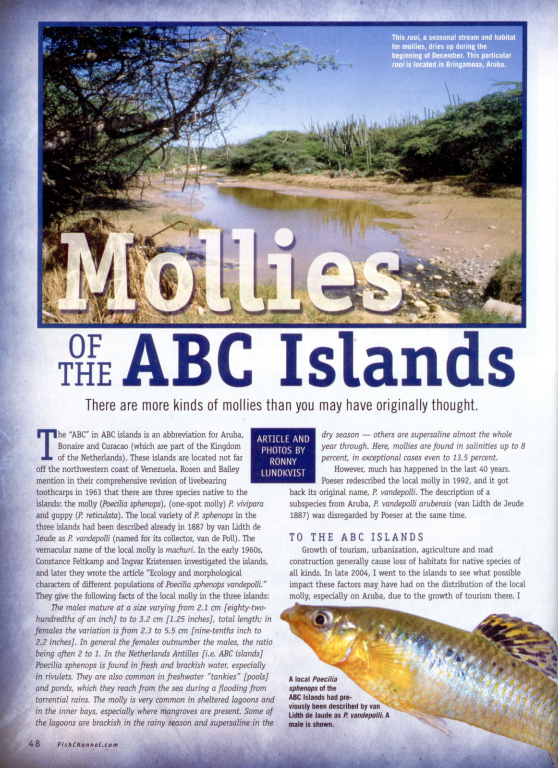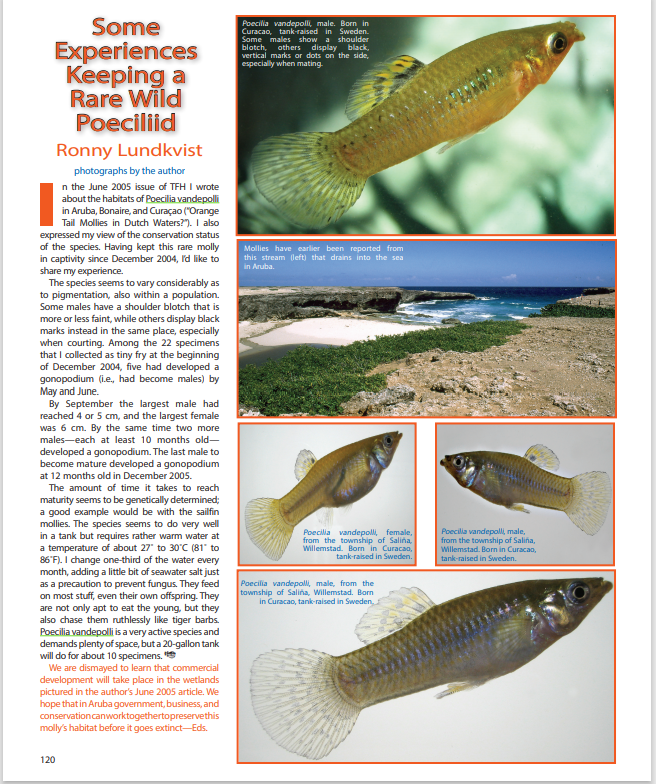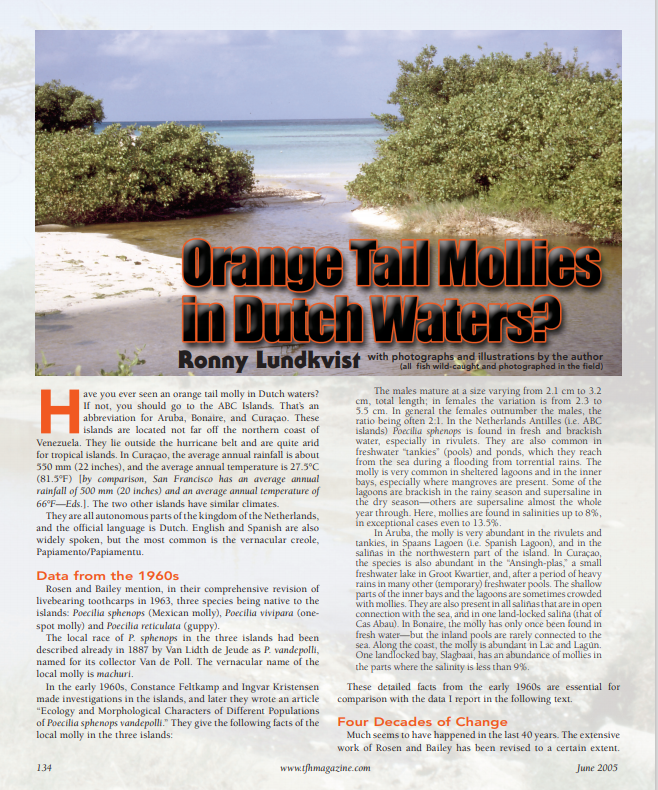Mollies of The ABC Islands
Submitted by Shassy Cahyani on Fri, 02/26/2021 - 14:03This article describes molly's morphology in different sex, natural habitats, captive molly requirements, and feed.
Short summary:
In 1963, there are three tooth carps species native to the islands: the molly (Poecilia sphenops), one-spot molly (P.vivipara), and guppy (P.reticulata). The local variety of P.sphenops in three islands had been described already in 1887 by van Lidth de Jeude as P. vandepolli (named for its collector, van de Poll). The vernacular name of the local is machuri. In the early 1960s, Constance Feltkamp and Ingvar Kristensen investigated the islands, and later they wrote the article "Ecology and morphological characters of different populations of Poecilia sphenops vandepolli."
Growth of tourism, urbanization, agriculture and road construction generally cause loss of habitats for native species of all kinds. In late 2004, I went to the islands to see what possible impact these factors may have had on the distribution of the local molly, especially on Aruba, due to the growth of tourism there. I found mollies in Aruba at three locations: the wetlands in northwest, at Bringamosa, and Modanza, both close to Arikok National Park; in Curacao at two locations in Willemstad; and in Bonaire at Sorobon.


